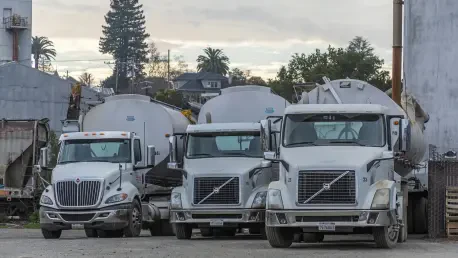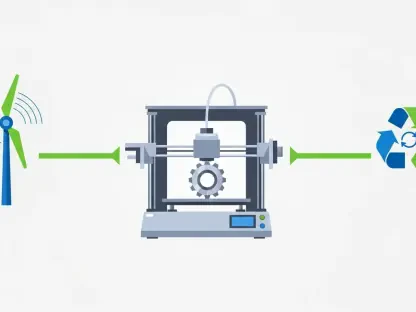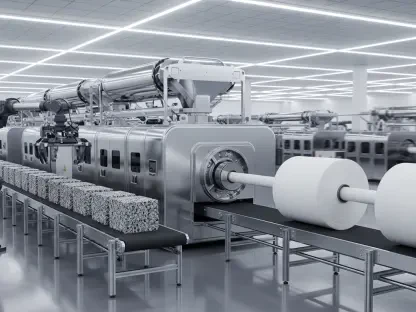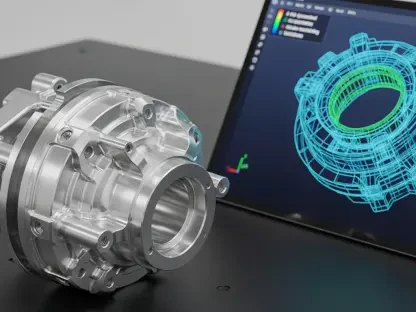The transportation sector stands at a critical juncture, grappling with the urgent need to curb carbon emissions while meeting the ever-growing demands of global freight. Heavy-duty trucks, long reliant on diesel fuel, contribute significantly to greenhouse gas emissions, accounting for a substantial portion of the logistics industry’s environmental footprint. Amid this challenge, electric heavy-duty trucks emerge as a transformative solution, promising to redefine freight transport with cleaner, more sustainable technology. This review delves into the intricacies of electric truck systems, exploring their core features, real-world performance, and the broader implications for the logistics ecosystem.
Core Technology and Features
Battery Systems and Energy Efficiency
At the heart of electric heavy-duty trucks lies advanced battery technology, which powers these vehicles with high-capacity energy storage systems. Modern lithium-ion batteries, designed to withstand the rigors of long-haul transport, offer impressive energy density, enabling trucks to cover significant distances on a single charge. Innovations such as battery swapping further enhance operational efficiency by minimizing downtime, allowing drivers to exchange depleted batteries for fully charged ones in minutes. This approach tackles one of the most pressing concerns in logistics: maintaining tight delivery schedules without the delays associated with traditional charging.
Energy management systems also play a pivotal role in optimizing performance. These systems intelligently regulate power distribution, ensuring that energy is used efficiently during acceleration, braking, and idling. With ranges often exceeding 200 miles per charge for many models, electric trucks are increasingly viable for regional and even long-haul routes. The integration of fast-charging infrastructure along key corridors further supports their adoption, reducing the time needed to replenish energy reserves and enhancing their practicality for fleet operators.
Design for Payload and Smart Mobility
Electric heavy-duty trucks are engineered to match, and in some cases surpass, the payload capacities of their diesel counterparts. Advances in structural design and lightweight materials help offset the added weight of battery packs, ensuring that cargo capacity remains competitive. This balance is crucial for industries like construction and freight, where maximizing load efficiency directly impacts profitability. Manufacturers have prioritized robust chassis designs to handle heavy loads without compromising durability or safety.
Beyond raw capacity, these trucks incorporate mobility intelligence systems that elevate operational reliability. Fleet management software, embedded with real-time data analytics, enables precise route planning, predictive maintenance, and driver performance monitoring. Such technology not only boosts efficiency but also reduces wear and tear on critical components, extending the lifespan of the vehicles. The seamless integration of these smart systems positions electric trucks as not just vehicles, but as integral parts of a connected logistics network.
Performance in Real-World Applications
The practical deployment of electric heavy-duty trucks showcases their potential to transform diverse industries. In logistics, companies have adopted these vehicles for regional deliveries, leveraging their quiet operation and zero tailpipe emissions to meet urban environmental regulations. A notable example is the initiative along the Mumbai-Pune electric corridor in India, where trucks equipped with battery swapping technology operate seamlessly, supported by dedicated infrastructure. This corridor exemplifies how strategic planning can align vehicle capabilities with sustainable transport goals.
In the construction sector, electric trucks have proven their mettle by hauling heavy materials over short to medium distances. Their torque-rich electric motors provide the necessary power for demanding tasks, while regenerative braking systems recapture energy during frequent stops, enhancing overall efficiency. These applications highlight the adaptability of electric trucks across varied operational environments, from bustling city centers to rugged worksites.
Case studies further reveal how tailored designs address specific regional needs. For instance, trucks operating in tropical climates are equipped with enhanced cooling systems to protect battery performance under high temperatures. Such customization ensures reliability in diverse conditions, reinforcing the technology’s versatility. As more industries experiment with electric fleets, the data gathered from these real-world scenarios continues to inform iterative improvements in design and functionality.
Industry Trends and Innovations
The electric heavy-duty truck sector is witnessing rapid advancements, driven by both technological breakthroughs and shifting market dynamics. Faster charging solutions, capable of delivering substantial power in under an hour, are becoming more widespread, addressing one of the key barriers to adoption. Simultaneously, vehicle designs are evolving to cater to specific logistical demands, with modular architectures allowing for customization based on route length or cargo type.
A significant trend is the growing emphasis on sustainable logistics, fueled by government incentives and corporate commitments to carbon neutrality. Policies offering tax breaks and subsidies for electric vehicle adoption are encouraging fleet operators to transition away from diesel. Moreover, consumer expectations for greener supply chains are pushing companies to invest in electric fleets as a means of enhancing brand reputation and meeting regulatory mandates.
Battery swapping technology stands out as a game-changing innovation, particularly in regions with high freight traffic. By enabling near-instantaneous energy replenishment, this approach eliminates range anxiety and supports continuous operation. Coupled with expanding electric corridor networks, which provide dedicated charging and swapping stations along major highways, the infrastructure is steadily aligning with the needs of modern logistics, paving the way for broader market penetration.
Challenges Facing Adoption
Despite their promise, electric heavy-duty trucks face notable hurdles that temper their widespread uptake. Range limitations remain a concern, particularly for long-haul routes where charging or swapping stations may be sparse. Battery lifespan also poses a challenge, as frequent deep discharges and high usage can degrade performance over time, necessitating costly replacements. Addressing these technical barriers requires ongoing research into more durable and energy-dense battery chemistries.
Infrastructure gaps further complicate deployment, with many regions lacking sufficient charging facilities to support large-scale fleets. The high upfront cost of electric trucks, often significantly more than diesel alternatives, presents another obstacle, particularly for small to medium-sized operators with limited capital. While the total cost of ownership may be lower due to reduced fuel and maintenance expenses, the initial investment remains a sticking point for many.
Regulatory and market challenges add another layer of complexity. Inconsistent policies across regions can create uncertainty for manufacturers and buyers alike, while the slow pace of grid modernization hampers the scalability of charging networks. Efforts to mitigate these issues, such as Energy-as-a-Service models that lower financial barriers and public-private partnerships for infrastructure development, are underway, but progress remains uneven across different markets.
Final Thoughts and Next Steps
Reflecting on this evaluation, electric heavy-duty trucks demonstrate remarkable strides in merging sustainability with operational efficiency, carving a viable path for cleaner freight transport. Their advanced battery systems, smart mobility features, and real-world adaptability underscore a technology that has matured significantly, capable of meeting diverse industry needs. The Mumbai-Pune electric corridor serves as a powerful testament to how integrated infrastructure can amplify the impact of these vehicles.
Looking ahead, stakeholders must prioritize expanding charging and swapping networks, particularly along critical freight routes, to eliminate range concerns. Investment in next-generation battery technologies should accelerate, aiming for longer lifespans and reduced costs to make electric trucks more accessible. Governments and industry leaders ought to collaborate on standardized policies that incentivize adoption while ensuring grid readiness for increased demand.
Beyond immediate actions, exploring autonomous driving integration holds promise for enhancing efficiency and safety in electric fleets over the coming years, from 2025 to 2030. Manufacturers should also focus on scalable designs that cater to varying market needs, ensuring that smaller operators are not left behind. By addressing these imperatives, the transportation sector can build on the foundation laid by electric heavy-duty trucks, steering toward a future where sustainability and logistics go hand in hand.









